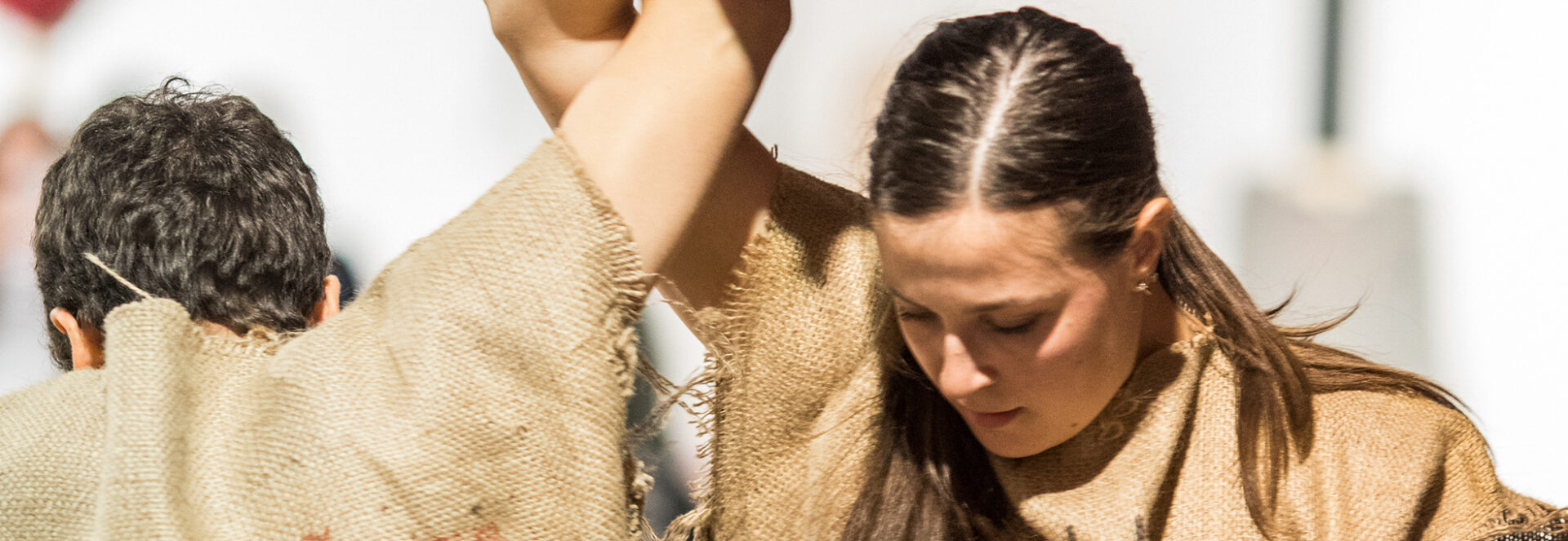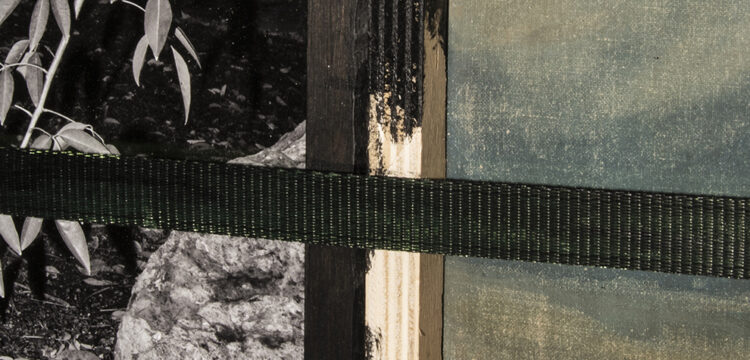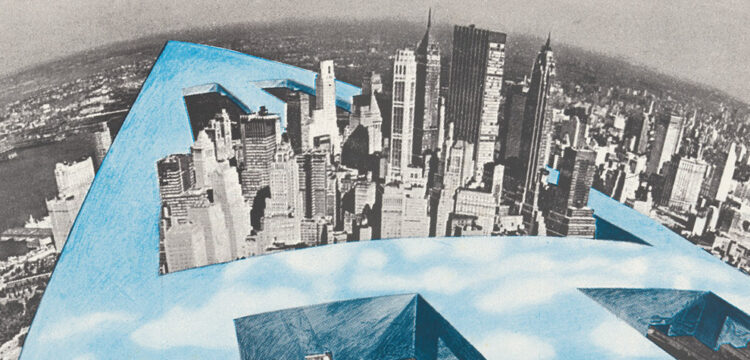New Communities of Care
On Gluklya’s artistic practice and exhibition “To those who have no time to play” – Part 2
The exhibition fabric of Gluklya’s To those who have no time to play, commissioned by Framer Framed in Amsterdam and curated by Charles Esche, is woven from intangible social processes and encounters. The artist’s practice of radical collectivity manifests through durational, regular, and intensive cooperation with old and new collaborators. Sharing creative experiences with them, Gluklya develops the conditions for gathering and communication among people that would not meet otherwise. Together they have built an environment for the exchange of feelings, skills and world views that leads to the formation of different ecosystems that can exist autonomously and occasionally merge together into a wider network of like-minded people or, in Hanna Arendt’s words, a “web” of human relationships.
This is the second part of an essay by Anna Bitkina (starting with To Those Who Can Imagine) which intends to serve as a non-linear alternative guide through the exhibition’s contexts and experiences, with some references to Gluklya’s projects that anticipated and informed the exhibition at Framer Framed.
During the pandemic Gluklya has revisited the notion and practices of care to create unity among humans and non-humans and overcome growing isolation and fear among living bodies. In 2021, throughout regular meetings at her studio, which she called “the clinic of radical care”, and interventions in the city of Amsterdam, where the artist came across lots of discarded mattresses, the Matras Platform has taken shape. This fluid, cross-cultural and cross-discipline platform can be acknowledged as a “new community of care”. Following the paradigm of “new community of change” proposed by feminist decolonial thinker Madina Tlostanova, the Matras Platform is configured as one of “diverse yet interlinked collectives of human species that consider themselves as an integral part of nature, have a relational and not only analytical way of thinking, driven by principles of transversal solidarity and the plurality of positions that have equal rights to exist.” [1]
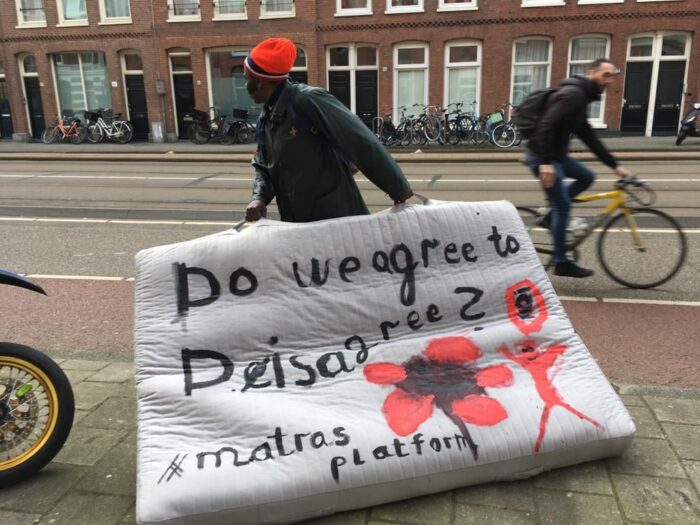
Matras Platform, or New community of care, serves as a collective backbone for the exhibition To those who have no time to play, and includes multiple voices and experiences as well as in-depth explorations of personal traumas caused by political changes and repression. From winter to summer in 2022, in preparation for the exhibition, members of the Matras Platform have been collectively reading, revisiting, and rethinking the plot of Sophocles’ Antigone. Gluklya proposed this work following the outbreak of the war in Ukraine, as a fundamental text to reflect on the global escalation of hatred and violence. Antigone, “the most commented-upon drama in the history of philosophy, feminism, and political theory”, was also chosen for being a familiar text for Europeans and a “coded literature” for representatives of non-western cultures, in order “to share and unlearn” these codes together. Through long conversations, political debates, exchange of life wisdom, storytelling, and listening, members of Matras Platform have contributed to Gluklya’s overall exhibition, and especially to the script of Antigone Update. Searching for the way out of the world’s antagonism and hegemony, the group has been practicing different “democratic designs” and “agonistic pluralism”, a new way of thinking about democracy, as conceptualized by post-modernist thinker Chantal Mouffe. She conceives “agonistic pluralism” as different from the traditional liberal concept of democracy based on a negotiation between interests and consensus, which is possible only if people can put aside their particular interests and think like rational beings. However, Mouffe argues, if we want to be free in our desires and views, the democratic process must provide a platform where differences can be presented and considered.
Therefore, Matras Platform is not a place of consensus; it is a safe space for a productive conflict and exchange where a recognition of each other is happening. This platform unites people from different parts of the world—Africa, Europe, Middle East, and beyond—learning from each other about diverse non-western educational traditions, rituals of hospitality, ceremonies of burial, grief and sorrow, legislative systems, concepts of truth and rightness. Throughout these meetings and often heated discussions different forms of kinship and spiritual relationship have emerged, tending to exist outside of Eurocentric logic and capitalist rationality.
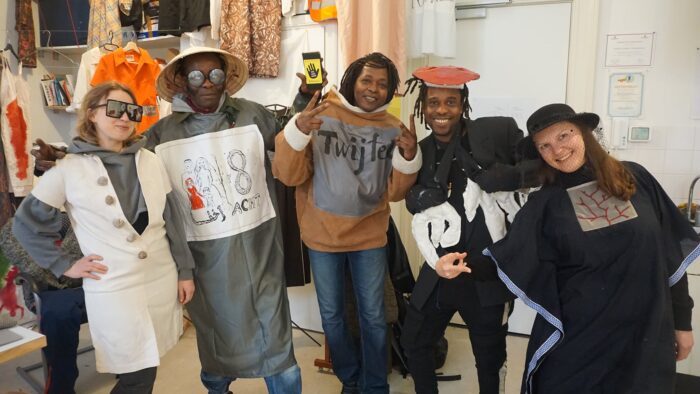
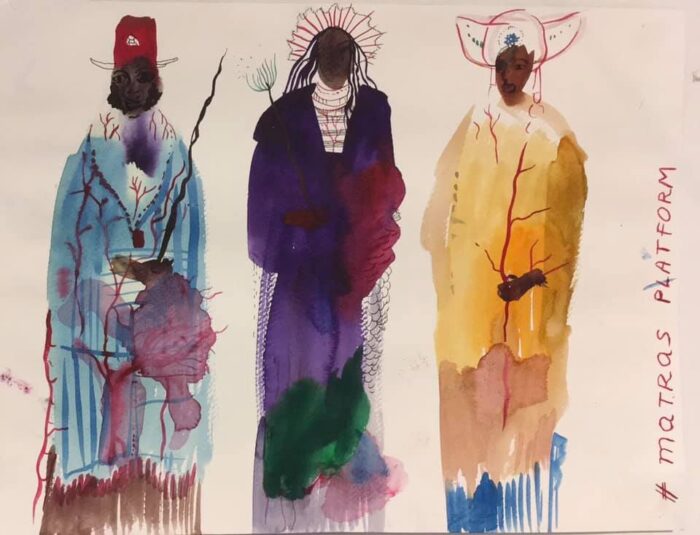
There are a number of developments in the script of Antigone Update that are informed by different translations and interpretations of Sophocles’ Antigone, as well as by the interest of Matras Platform’s participants to extend the potentiality of classical tragedy to current reality. Recorded, transcribed, and adapted parts of the group conversations became a base for the chorus voices in the script of Antigone Update. The voice of “traditional” power of Creon is reduced to almost zero instead: according to the new script, he produces only “sound of the cacophony of different instruments”. The Chorus is concerned “about the necessity to find the balance between people’s beliefs (unwritten law, so to speak) and the principles of the state”. In the last act, the Chorus also addresses the audience: “In this play, the audience has to decide whether the question of burial is one that should be decided by the political rulers of a polis [that’s Creon’s view], or whether it is an issue that supersedes all earthly authority and where religious convention wins out [that’s Antigone’s view and Ismene’s].” In Ancient Greek mythology gods and religion have a strong connection to nature.
Antigone Update is inspired by aspects of female solidarity and heroism as a collective political act, thoughtfully analysed by Bonnie Honig in her Antigone, Interrupted (2013): “faced with catastrophe (most of her family dead, her way of life criminalised by Creon), Antigone nonetheless acts politically in conditions of impossibility”, and she does not act alone… “she enters into political conspiracy against Creon with her sister Ismene”. Diverting from a traditional depiction of Antigone as a lone isolated heroine, resembling the classical image of the male hero, Honig extends the agency of Antigone as initiator of a collective political act that is “embedded in and enacted on behalf of forces, structures, and networks larger than the autonomous individual”. Despite the fact that two sisters have quite opposite characters and have a fight in the beginning, Honig suggests to consider them as collaborators who complement each other’s political drive in the action of united conspiracy. “Antigone knows what she has to do but she does not just go out and do it. She turns to Ismene seeking help.” Honig also refers to Jill Frank’s accurate description of the sisters’ characters: “Ismene is not withdrawn, weak, or incapacitated; she is patient and bides her time. Antigone, by contrast, is too quick to act, too fiery, too thunderously loud to be truly effective.” By building up through her close reading the idea of female solidarity and sisterhood Honig also questions the “contestable humanist assumptions about heroic individual agency, politics, and sovereignty”.
“When political and feminist theorists approach the Antigone dramaturgically, we also interrupt many elements of its canonical reception history and open up new interpretative possibilities”, Honig writes. Inspired by Matras Platform insights and carried away by Honig’s close reading of Antigone, Gluklya developed several unexpected interpretations in her script. In Antigone Update two sisters agree from the very beginning to act together to overcome the injustice and bury Polyneices because their uncle Creon “has violated the main law that all the people must be buried equally despite the things they did in their life”. In Antigone Update Gluklya twisted the relation between the sisters and their sisterhood by making Ismene, who is usually seen as “an anti-political character who lacks the courage or imagination”, the one who acts proactively. She takes the courage and buries her brother alone “out of love and care” for Antigone, who gets furious because the sister drugged her with the root of a mandrake and left her out of the burial ceremony. This turn is explained by the Chorus: “Yes, self-organization among women is a difficult topic, and they can show a lot of vulnerability. But there is also the issue of care which instead of being healthy, balanced care might grow to become over-care”.
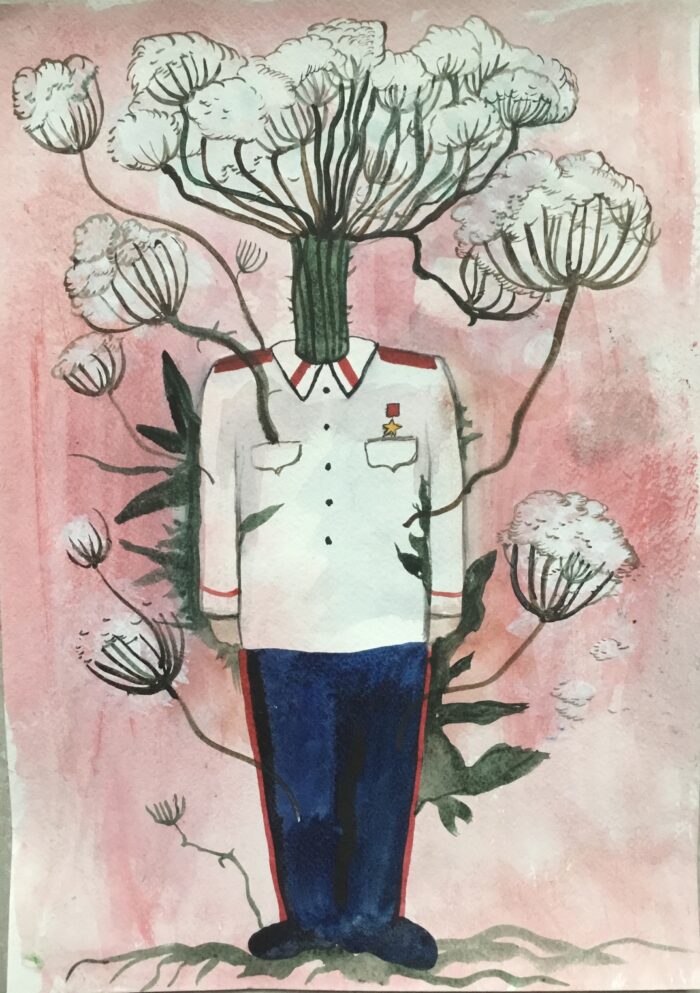
The most mysterious part of Antigone Update is the very bleak open ending: “Ismene married Creon and they produced a child, a new Messiah. This child must save the world”. This ironic turn of events called Requiem—possibly Requiem for a Better Future—doesn’t leave any room for hope and possibility to step out of the spin of “political promise”: “Modernity always promises us that things will be better if we just follow their one perfect path—and we believe it. The role back of reproduction rights, criminalisation of migration, total privatisation of everything, absence of social housing, racism and homophobia is the reality of our life! The circle is coming back! All is back!”, the Chorus sings. However, the Sentry concludes the script: “Power is one thing but doing what you think is right can be very different”, and with this ending Antigone Update calls for a political literacy and empowerment of individuals, awareness of the power of propaganda and conscious civil society. Possibly, by drafting such a radical end Gluklya is teasing her audience, inviting to propose plural versions of the final act? Maybe Ismene should become the governor of Thebes? Or maybe Haemon will kill Creon to become the king of Thebes; and his mother Eurydice will stay alive. There are lots of possibilities for different scenarios which aim at boosting creative and political imagination.
The script of Antigone Update is presented in the exhibition in the format of an audio installation, allowing a sonic experience of To those who have no time to play. The sound composition originated from the dialogue between Gluklya and her long term collaborator and friend, internationally acclaimed composer Vladimir Rannev, who writes acoustic and electroacoustic music that is informed by “his personal resonance with the surrounding social environment, memory of culture and experience of introspection”. According to Rennev, “his compositional technique has been influenced by classical music education, years of playing in a rock band and projects with contemporary artists”. His original music score for Antigone Update was titled Cantata in 10 Acts and constructed out of several components which have been recorded separately and merged together in one music piece. It consists of recordings of Matras Platform meetings, the sound of which comes from the white narcissus flowers set up in the exhibition. One of the distinct voices in this array is Marianne Koeman, a regular participant, educator, psychologist, and healer. The central music component is singing parts of the main script characters which are sung and recorded by members of the professional ensemble N’Caged (Moscow) to be played on stage, periodically interrupted by the sound of sewing machines.
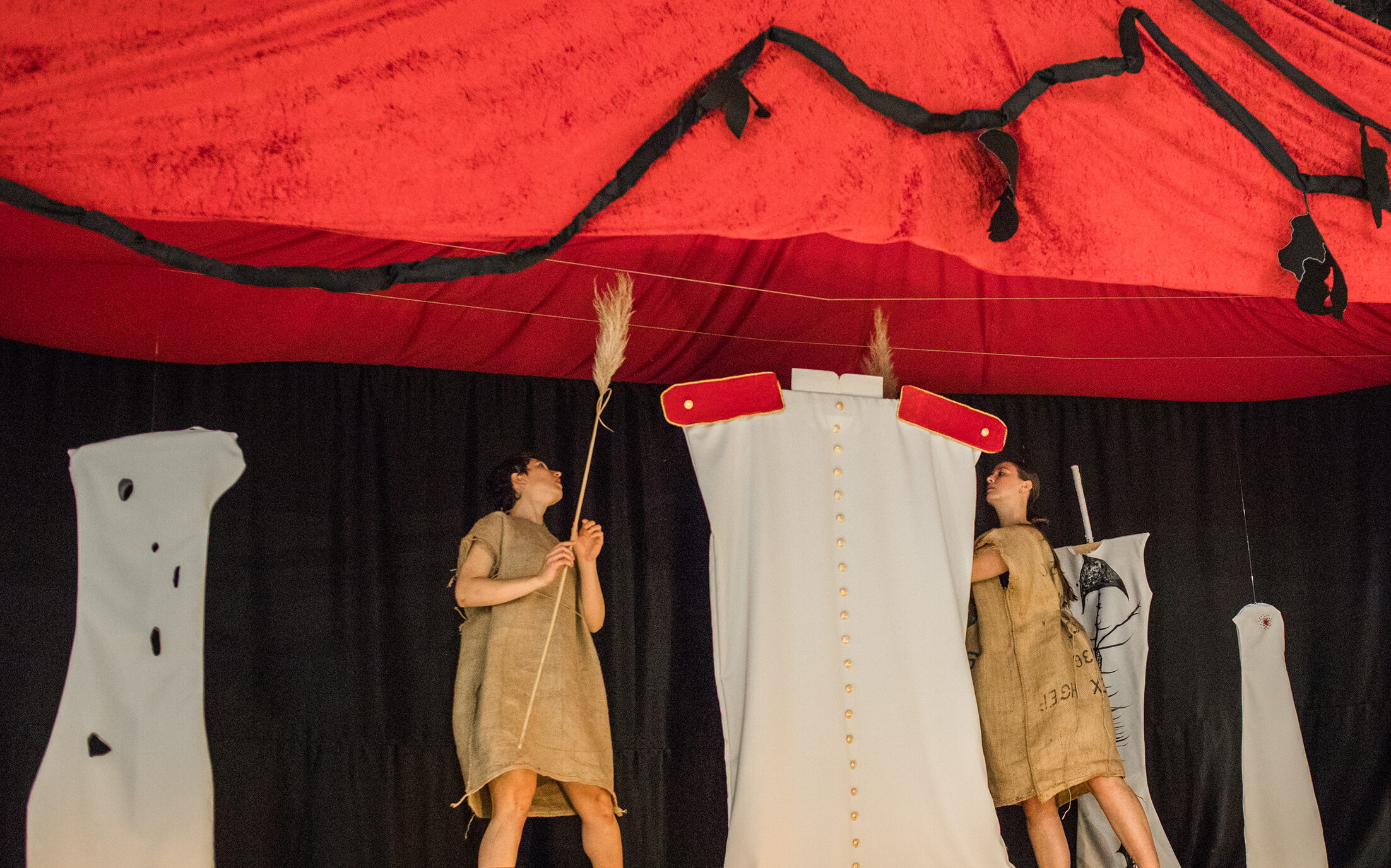
The backstage of the music writing has its tragic undertone. Rannev started to work on his music piece straight after the beginning of the war in Ukraine, in a moment of personal disorientation and regional catastrophe. The chorus recording was also interrupted by the announcement of the military mobilisation in Russia, which forced some singers from N’Caged ensemble to flee from the country. The music is overall influenced by Mozart’s last and unfinished Requiem; therefore, the music atmosphere is very tragic and sorrowful. The idea of the Requiem, which was commissioned to Mozart in 1791 as a funeral mass, came in connection with the funeral ritual of Polynices, meant to be executed during the exhibition performance.
According to Gluklya there were magical moments of collaborative creation with Rannev, although the process took place in the distance. For example, Gluklya decided to deprive Creon of his voice, and Rannev replaced it with musical inserts. Then, almost simultaneously and independently of each other, they decided that the part of the fortune-teller Tiresias should be sung by a female voice. Guiding Rannev through the script, Gluklya pointed out parts where the intensity of the relationship between the sisters was changing, and he responded to that in his music composition.
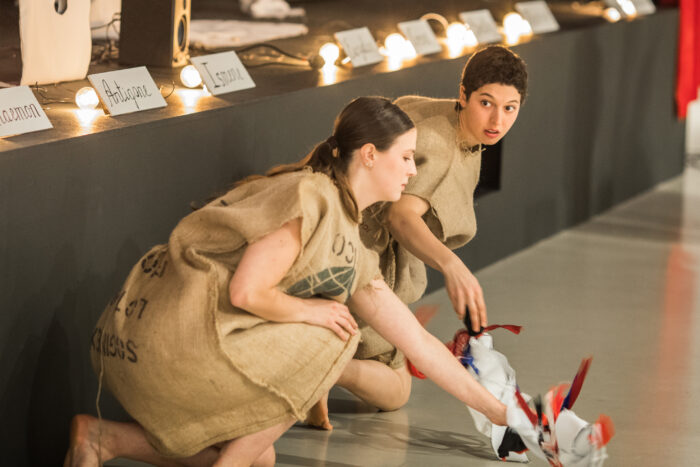
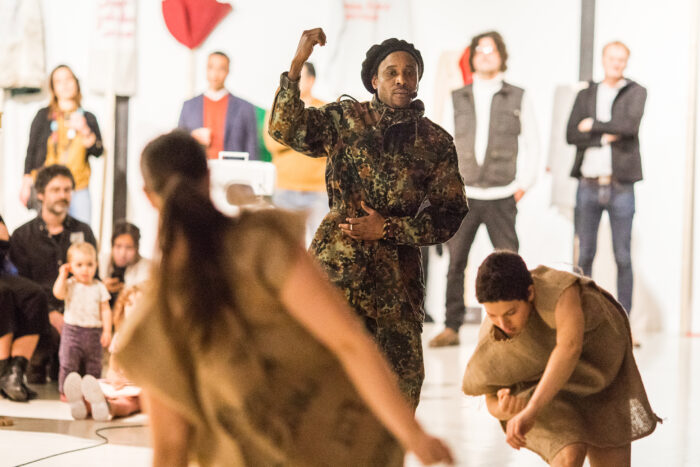
The Antigone Update script is also enacted in the exhibition through occasional live actions directed by Gluklya and performed by Matras Platform’s participants—Shepherd Camara, dressed in a military uniform, in the role of Sentry, and the dancers Georgia Boddez and Liah Frank, dressed in gunnysacks, in the role of Servants. The performance aims at activating the central installation of the exhibition by connecting humans with the dresses of the main protagonists, the cohort (or chorus) of sewing machines, and the biomorphic creatures. This performative presentation of the script is a possibility to exercise the magic and liminality of the transitional relationship between humans, non-humans, and dead in different historical and political times.
To conclude this, discussing possible formats and acts of care and interconnectivity, it’s important to mention the housing ground of Gluklya’s exhibition. To those who have no time to play was commissioned and produced by Framer Framed, that has been a platform to rethink the role of art, and the position and purpose of art institutions in the cultural and political life of civil society since 2008, providing possibilities for the development of different communities. The institution operates as a living organism of connections, exchanges, different cultures and learning approaches, visions and positions. There could have been no better place to present Gluklya’s show, which has no stable, finished or rigid structure, and nature. Even after the opening, To those who have no time to play is still in a process of adjustment, polishing, editing, and growing into something new.
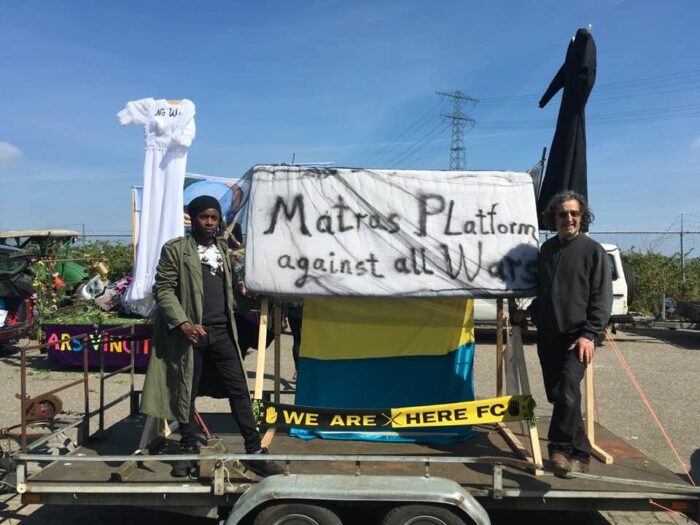
[1] The term “new community of change” was proposed by Madina Tlostanova, a professor of postcolonial feminism at the Department of Thematic Studies(Gender studies) at Linköping University, Sweden, at TOK’s Symposium “Interdependency as a Condition”, held as part of the IV Arctic Art Forum in October 2020: https://www.youtube.com/watch?v=kvIAqNUxATU&t=861s

